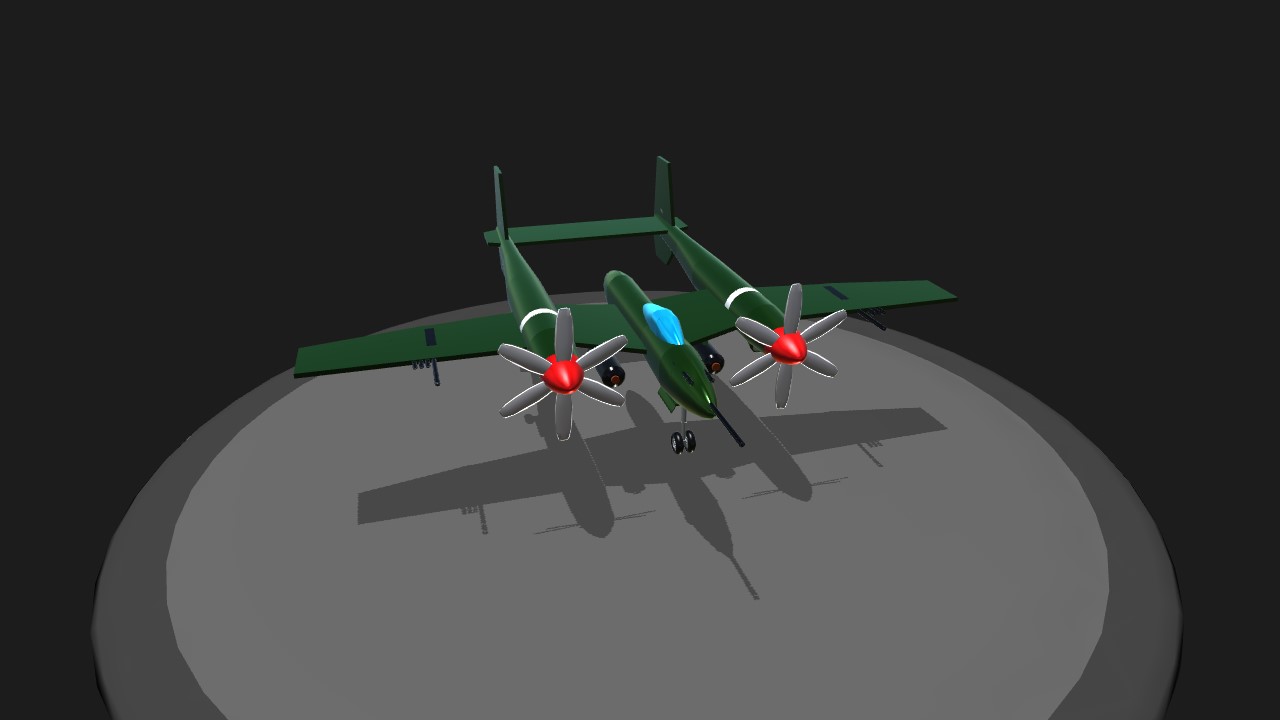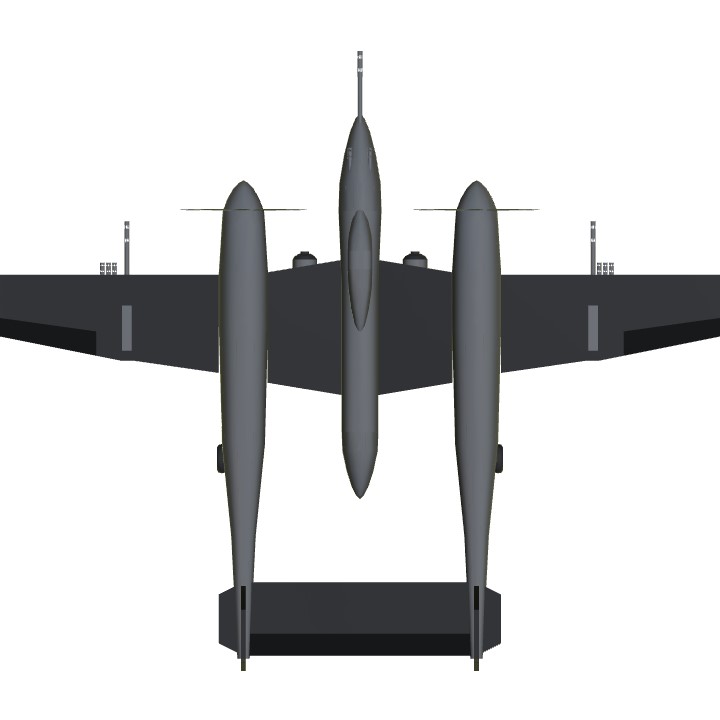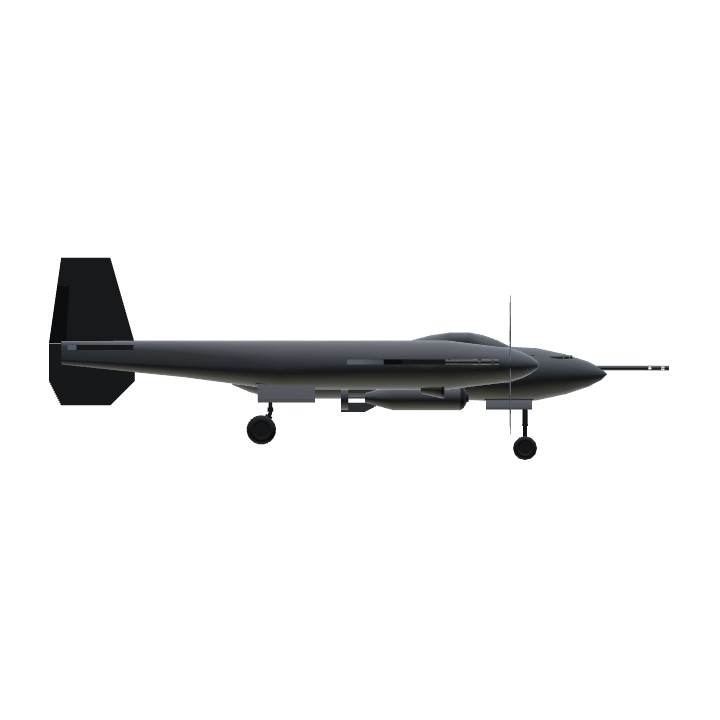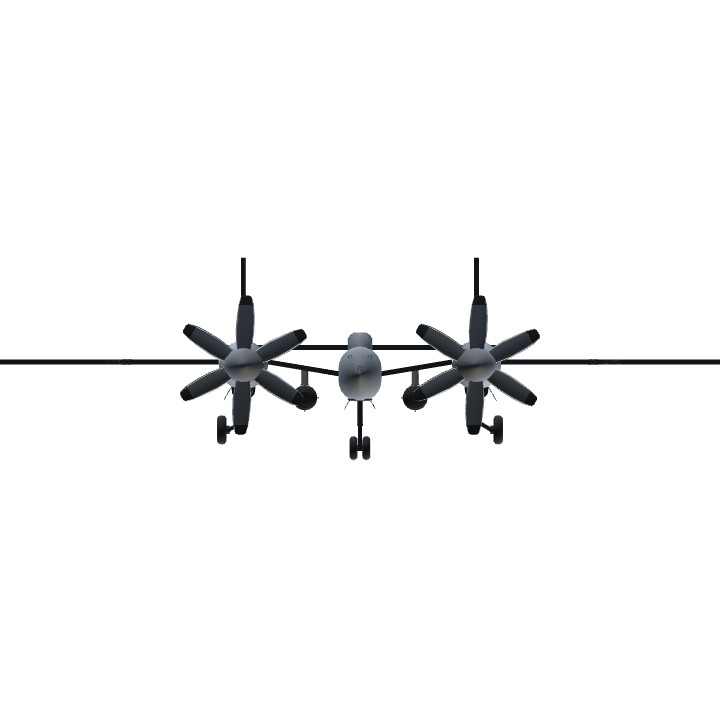Created in 1910 by using time traveling technology found in super sekrit locations)))), the Empire of Blightia was able to construct a fighter from advanced reciprocating engine and aerodynamic technology. It was thus able to turn the tide in a series of wars and completely obliterated the opposing (formerly) factions. This aircraft is the final result of the P-370 series, and was seen to be a heavy fighter, but considereing that it was facing scarcely more than glorified kites with 10-50hp engines strapped to them, it was more of a mobile slaughter factory. It was armed with 8 20mm and 3 30mm rapid fire autocannons. It also carries bombs to coventrate enemy ground based forces. It has 2 6000hp engines, each powering a 6 bladed propeller for a top speed of around 650mph. Now for some more backstory! The P-370 series was a series of somewhat heavy fighters that were decades ahead of their time. Using advanced ultra small engine technology, the very powerful engines were packed in a space so small that not even with the world's finest microscope can they be seen. The engines drove 4-6 bladed propellers from the Kuat Drive Yards. The wings have an interesting sweep profile, similar to that of an A-35. The full designation for this aircraft is Patrol-Model 381, Full Armed, Twin Boom, Sweep wing, Retrac. Gear, Mod. 1910. The aircraft was loved by all who flew it, and it served well into the 1940s, being phased out of service in 1945. This particular aircraft was flow by Lt. Commander Eli Vanto, a 20x Ace and serving with the 6th wing of Squadron 9,001 under the command of Commodore Jim Donegan.
Specifications
General Characteristics
- Created On iOS
- Wingspan 34.7ft (10.6m)
- Length 29.8ft (9.1m)
- Height 9.7ft (2.9m)
- Empty Weight N/A
- Loaded Weight 5,904lbs (2,678kg)
Performance
- Horse Power/Weight Ratio 2.032
- Wing Loading 13.8lbs/ft2 (67.3kg/m2)
- Wing Area 428.6ft2 (39.8m2)
- Drag Points 2192
Parts
- Number of Parts 70
- Control Surfaces 6
- Performance Cost 365





